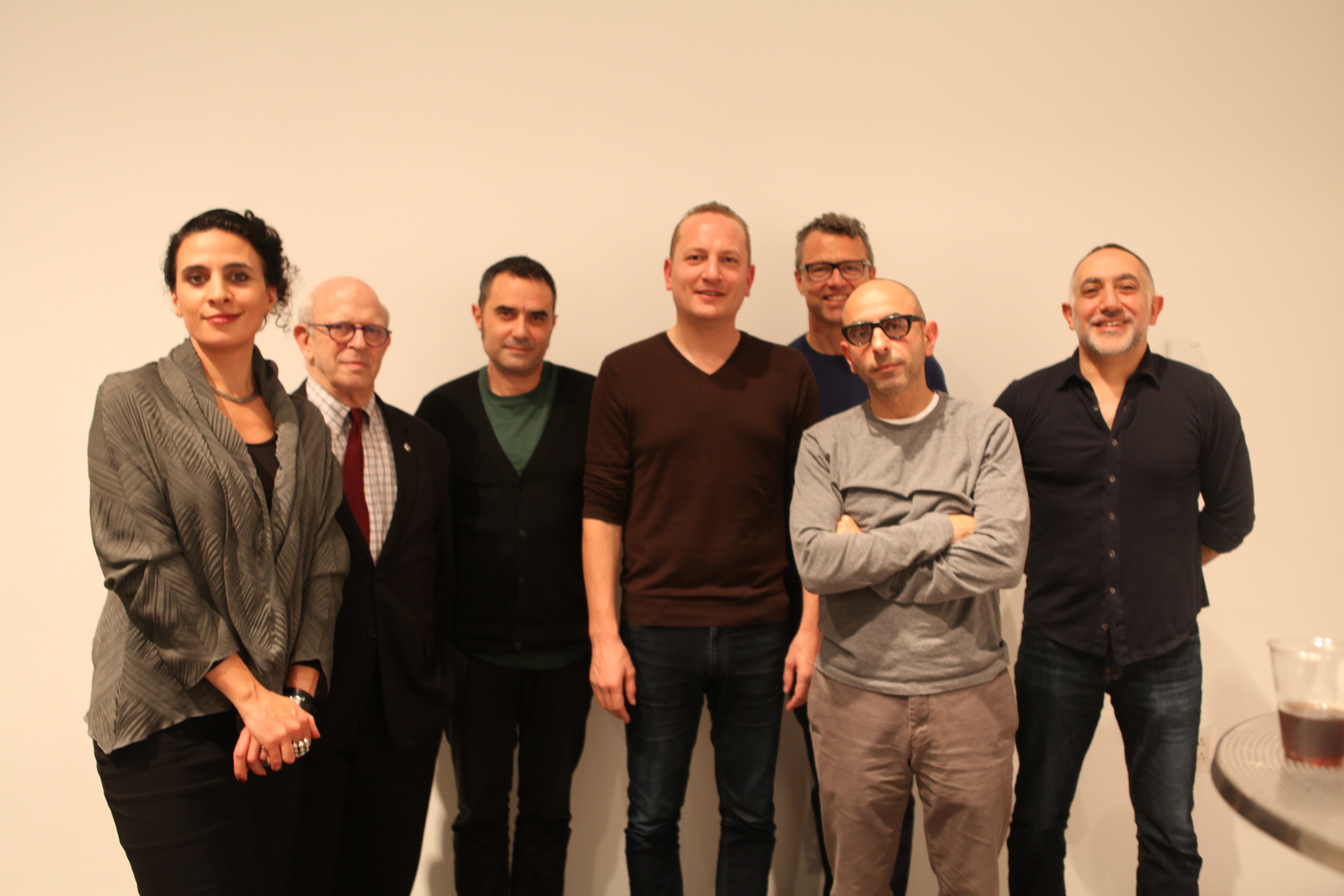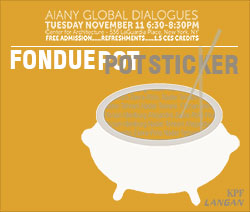by: James Way
Searching for what defines “milieu” and “identity,” the program “Fondue Pot Stickers: Divergent Voices” tackled a number of academic and philosophical issues in architectural processes and works. Hashim Sarkis, the evening’s moderator, inquired into whether geographic, institutional, or professional environments and situations define one’s practice. The introduction set the tone that resonated between proclamation and inquiry, an ambiguity that pervaded the evening.
Nader Tehrani, principal of NADAAA, cited the Croissan’wich as a “diagram of reconstitution,” ultimately an abstraction of a type and retreat to material, a metaphor for his process. His examples showed his reinterpretations of basic architectural elements – roofs, sections, topography – into new forms of expression, including varying the space between brick and mortar to create a screen wall. His presentation ended with the recently completed School of Architecture at the University of Melbourne, Australia. The international collaboration with John Wardle Architects began a mere three days before the RFP was due, and continued with touch-and-go operations. It seems fitting that Tehrani, who grew up in South Africa, London, and the U.S., would easily navigate different cultures and working methods and processes.
Alejandro Zaera-Polo, a principal at AZPML, tried to take a step back from theory to let the projects speak for themselves based on their geographic influences. Looking at regional vernaculars, he attempted to resist a mobile identity, though designs and building means and methods appeared entirely contemporary. A project in the south of Spain developed from North African domes, while a project in northern Spain riffed on pitched roofs. Precedents included the inflatable bubble architecture of Vienna’s Haus-Rucker and contemporary renditions of barns worldwide.
SO-IL Principal Florian Idenburg, Intl. Assoc. AIA, explored his education as a “diagrammatic Dutch” moving to SANAA’s tutelage in ambiguity and endless iterations. He partnered with a Chinese colleague to launch SO-IL. Running through their project for a gallery in Korea, Idenburg exemplified discussion and theorizing: a U.S. firm with its own cultural baggage, sourcing production in China for a client in Seoul. The result is something simple, covered in a screen that obfuscates the basic form while remaining intriguing and exhibiting moments of brilliance and beauty.
Zaera-Polo confirmed that things transcend language and relate to archetypes, where forms cross time and vernaculars span geography. Tehrani added that this leads to “frictions in interpretation and allows architectural agency to transcend a cultural context.” Idenburg conceded that when things don’t always make sense, as when he practiced in Japan, there emerges a multiplicity. Ultimately, he declared, “We are all hustlers to an extent, trying to find a way through,” and one does this with any or all the tools in his or her toolbox.
James Way, Assoc. AIA, Marketing Manager at Dattner Architects, frequently contributes to eOculus.
Event: Fondue Pot Stickers: Divergent Voices
Location: Center for Architecture, 11.11.14
Speakers: Alejandro Zaera-Polo, Principal, AZPML, and Visiting Professor, Princeton University; Nader Tehrani, Principal, NADAAA, and former Head of Department of Architecture, MIT; Florian Idenburg, Intl. Assoc. AIA, Principal, SO-IL; and Hashim Sarkis, Dean, MIT School of Architecture and Planning (moderator)
Organizers: AIANY Global Dialogue Committee
Sponsors: KPF and Langan
Food Sponsors: Favela Cubana









